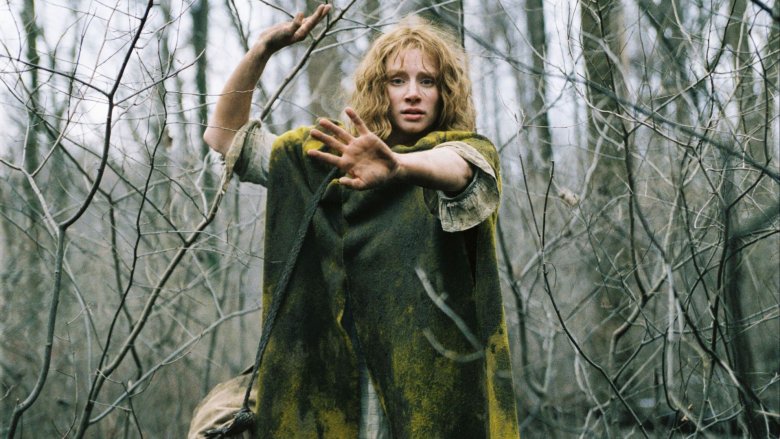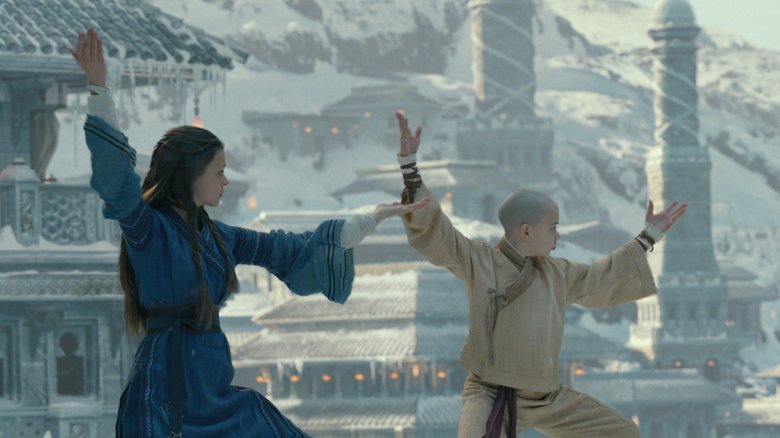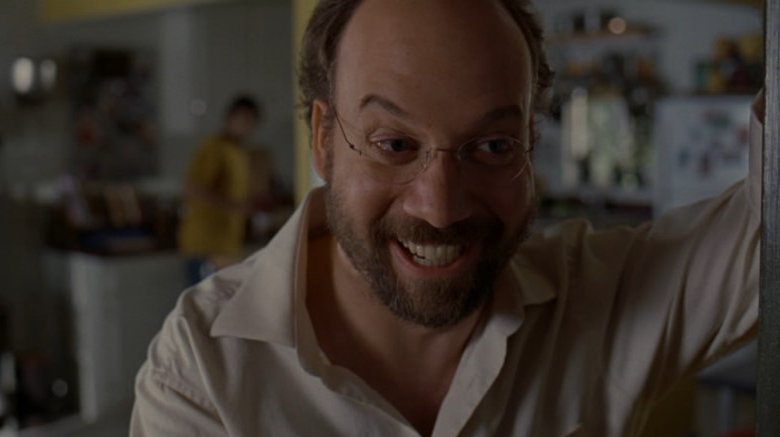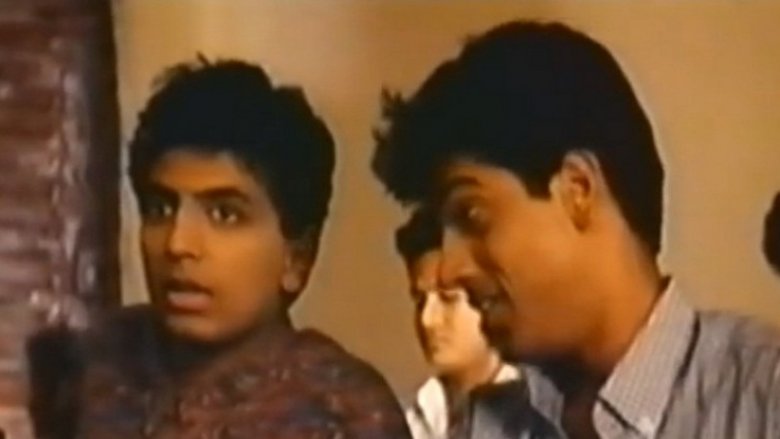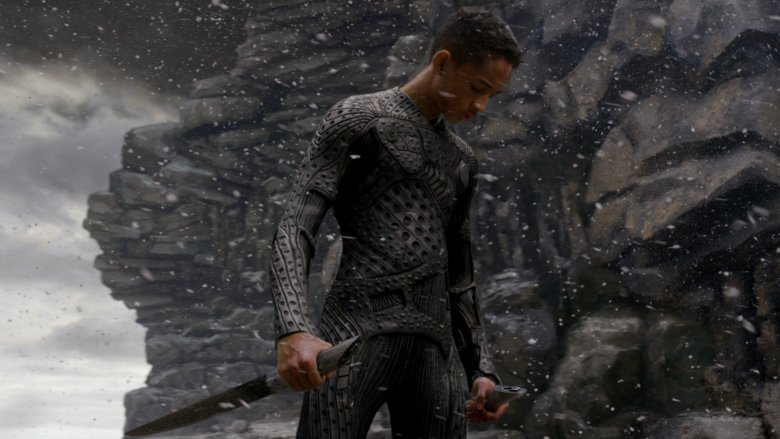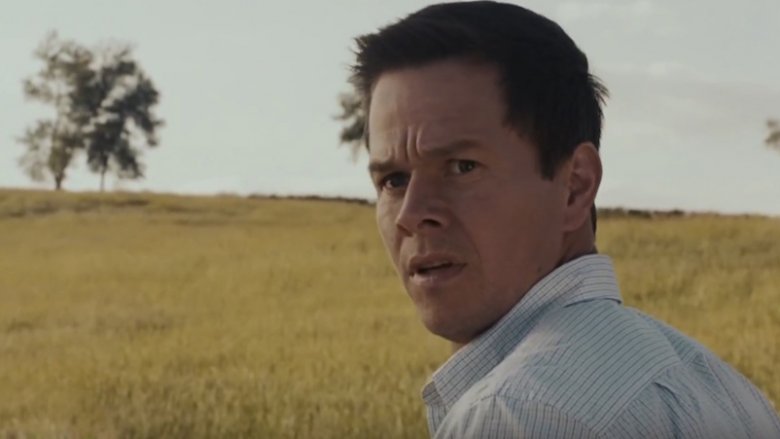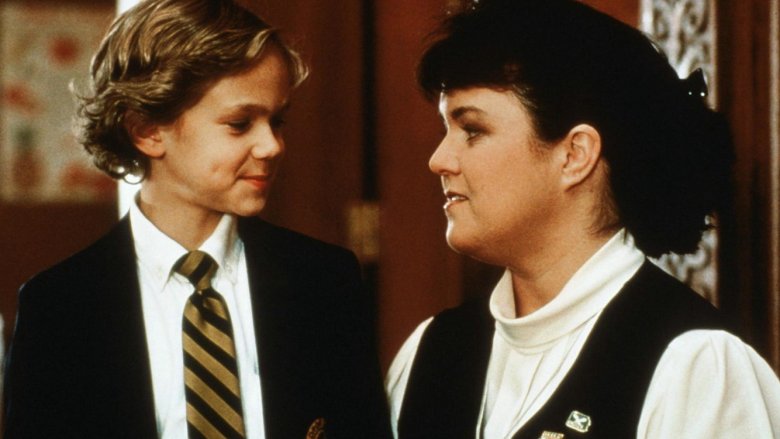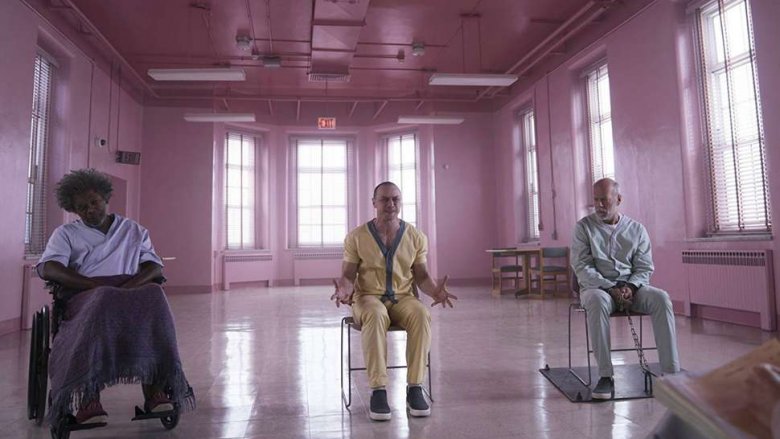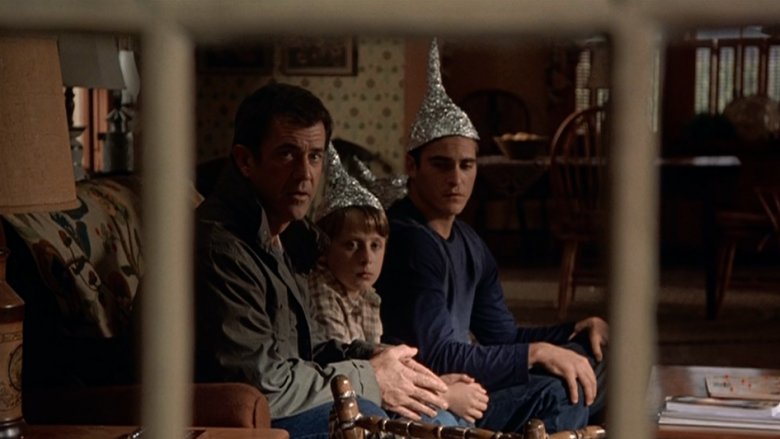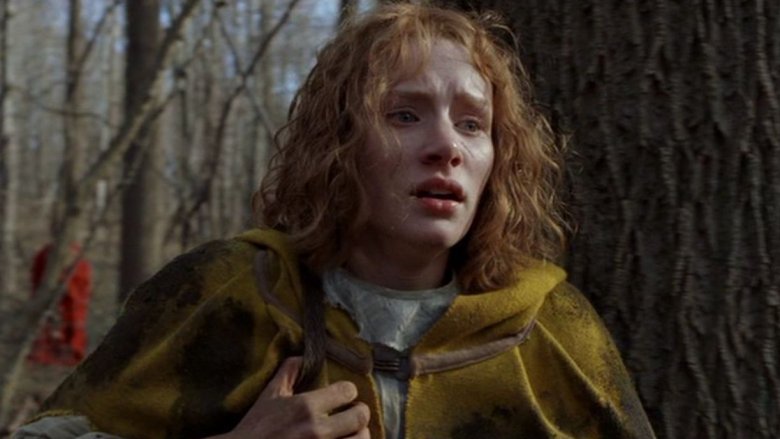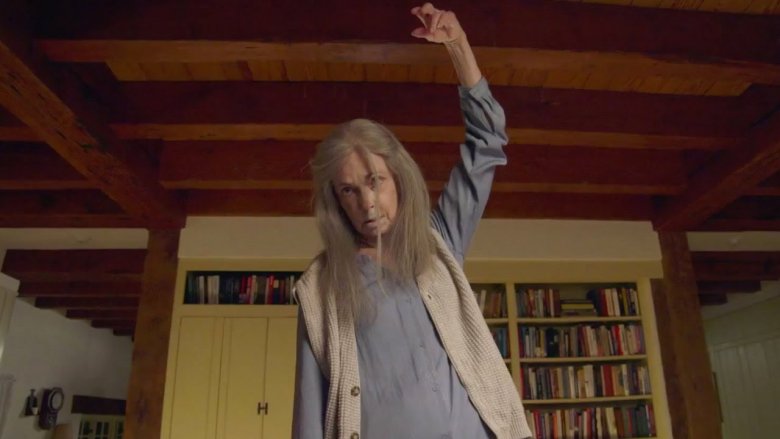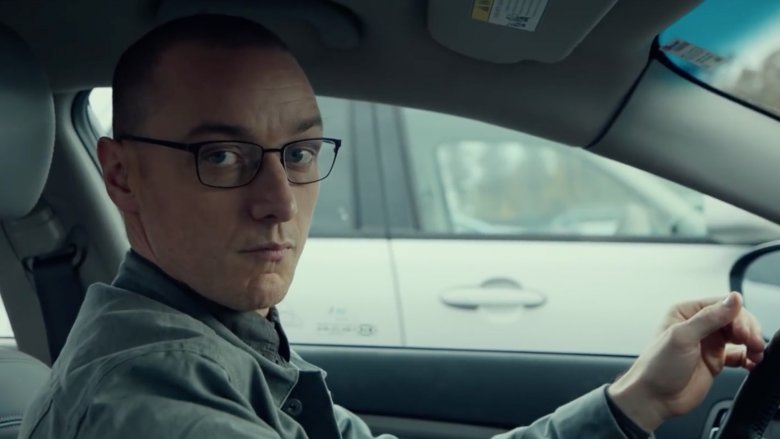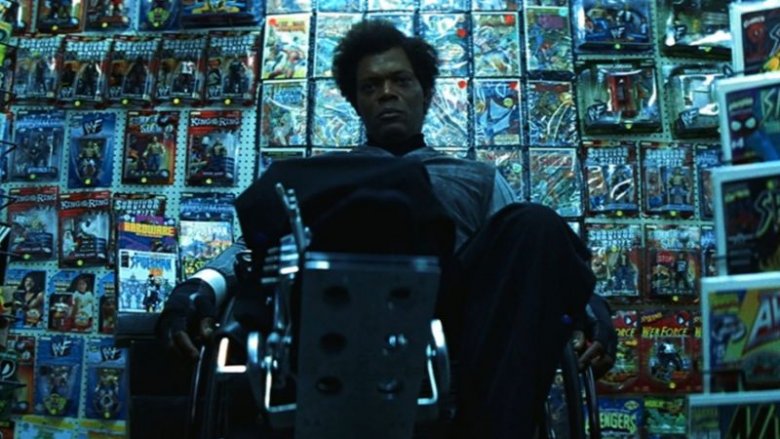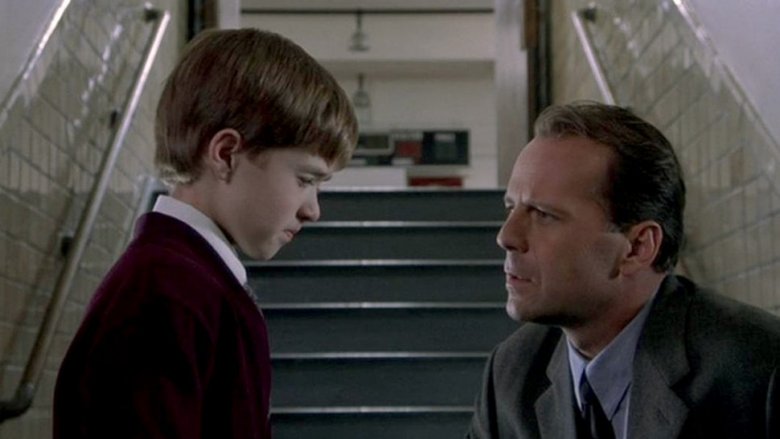Every M. Night Shyamalan Movie Ranked Worst To Best
Few filmmakers working today have experienced as many professional peaks and valleys as M. Night Shyamalan. Since breaking out with his Oscar-nominated supernatural thriller The Sixth Sense, the writer-director has been hailed as the the second coming of Steven Spielberg, labeled as a genre hack who lost his edge, and become the poster boy for late career resurgences. Every step of the way, Shyamalan has managed to carve out a distinct filmography full of stylized genre efforts that feature compelling characters, extraordinary mysteries, and some of the greatest twists in the history of cinema.
Of course, some of Shyamalan's movies are more memorable than others. That's just how it is in the movie business, and nobody's record is spotless. Those ups and downs will doubtless continue for the rest of his career — which means now is as good a time as any to revisit his filmography by ranking each of his movies from worst to best. Keep reading to find out if we've come up with a crazy twist ending of our own.
The Last Airbender (2010)
M. Night Shyamalan built his reputation on crafting thoughtful blockbuster films with non-blockbuster budgets. Of the director's first seven films, none cost more than $75 million to make. It was a bit surprising, then, that on the heels of two major flops, Shyamalan managed to procure a whopping $150 million for his adaptation of the fantastical adventure The Last Airbender. Maybe he just couldn't the resist the temptation to go bigger than he'd ever gone before, but those who bought a ticket to The Last Airbender — and the studios that financed it — were left wondering exactly where that money went.
A wave of abysmal reviews greeted The Last Airbender's release. Considering that Airbender — intended as the first part of a trilogy — is based on a wildly inventive Nickelodeon series, one simply has to marvel at the dull factor of this adaption driven by soulless performances, stale visuals, uninspired set pieces, and unbelievably bad special effects. Needless to say, all plans for a Shyamalan-directed trilogy were promptly halted, though the film still fared reasonably well at the box office: The Last Airbender actually managed to pull in north of $300 million in worldwide grosses, which may be the biggest twist Shyamalan has ever pulled.
Lady in the Water (2006)
Prior to beginning production on his 2006 fairy tale Lady In The Water, M. Night Shyamalan was on a hell of a winning streak, with two instant classics to his credit (The Sixth Sense and Unbreakable), and a couple of solid but divisive box office hits to boot (Signs and The Village). Any new Shyamalan project came with "event movie" expectations, so Lady In The Water — boasting a cast fronted by Paul Giamatti, Bryce Dallas Howard, and Jeffrey Wright — made its premiere aiming for a higher bar than even Shyamalan might've understood.
Lofty expectations tend to breed heavy scrutiny, and critics were less than kind to Shyamalan's bonkers yarn about a blue-collar guy trying to help a stranded water faerie return to her home world. It's hard to disagree with those reviews. Though Lady In The Water features stunning visual elements, the story is a wildly unfocused confection of kooky characters, half-baked fantasy elements, and fully baked plot twists. It's also horribly self-indulgent, with Shyamalan casting himself as a writer whose book will eventually save humanity, and dispatching with a haughty film critic character in particularly nasty fashion. Maybe Shyamalan should've been a little more critical of himself. Lady In The Water sunk with audiences too, becoming Shyamalan's first legit box office bomb, and one of his most disappointing efforts to date.
Praying With Anger (1992)
M. Night Shyamalan started working on his debut film Praying With Anger while still a student at NYU. He wrote, produced, funded, directed, and starred in the project himself. It revolves around an Americanized young man of East Indian descent returning home to rediscover his roots — and Shyamalan, who was born in India and raised in an affluent suburb of Philadelphia, based Praying With Anger on his own return trip to India in his teens. Needless to say, it was an intensely personal story.
While Praying With Anger lacks the supernatural elements Shyamalan has become known for, it still sees him exploring familiar themes of family, spirituality, and identity, and with a warmth and sense of humor all but absent from much of his later work. As with most debuts, Praying With Anger isn't without its problems. You can see him struggling with the tone and pacing, and Shyamalan — never a particularly strong performer — proves he likely took on one job too many by casting himself in the lead. Whether he made that decision based on necessity or on hubris, Shyamalan's flat, detached performance is often painful to watch. Luckily, there's enough going on beneath the surface of Praying With Anger to keep it engaging. At the very least, it's a compelling — if not particularly satisfying — look at a first-time director figuring out how movies work.
After Earth (2013)
Even after the costly debacle that was 2010's The Last Airbender, M. Night Shyamalan wasn't quite done swinging for the big-budget fences — and Hollywood studios weren't quite done betting big on the director delivering another major hit either. Columbia Pictures ponied up $130 million for Shyamalan's sci-fi adventure After Earth, and although the reviews weren't quite as abysmal as they'd been for his most recent efforts, they weren't exactly good.
That's not totally surprising. After Earth was originally pitched to Shyamalan by Will Smith as a star vehicle for himself and his son Jaden, and follows the pair as they struggle for survival after being shipwrecked on an alien planet. It's a promising setup for the Shyamalan treatment, but neither Smith brought a hint of star swagger, and the surprising lack of chemistry between the real-life father and son leaves an emotional void in the film that it simply cannot overcome.
For his part, Shyamalan once again drops the ball when it comes to the film's staging and visual elements, wasting the talents of brilliant cinematographer Peter Suschitzky along the way. Though After Earth bombed hard stateside, it did well enough overseas to turn a modest profit. Still, given his track record with tentpole fare, we're betting it'll be a while before Shyamalan goes this big again.
The Happening (2008)
After startling his fanbase into concern with Lady In The Water, Shymalan continued to stumble with The Happening, a sci-fi thriller that follows a teacher, his wife, and their friends as they try to outrun a mysterious, fatal plague. On paper, the concept has the makings of another intriguing Twilight Zone-ish tale for Shyamalan. But the film features career-worst performances from Mark Wahlberg and Zooey Deschanel, a third act that can only be described as mind-bogglingly stupid, and the sort of hackneyed, tin-eared writing that leaves one wondering how The Happening got off the ground at all.
There's a reason The Happening feels unpolished. Shyamalan was working on the script while the 2007 writer's strike loomed over Hollywood. Fearing a lengthy content drought, studios began fast-tracking productions to fill a potential void, The Happening among them. It was released to some of the worst reviews of Shyamalan's career, but the one thing it has going for it is a campy, irreverent, B-movie charm that never quite lets you take the onscreen absurdity too seriously. That B-movie feel may not be intentional, but it's the only reason The Happening is at all watchable, and ultimately keeps it form claiming the title of "Worst Shyamalan Movie." Now who wants a lemon drink?
Wide Awake (1998)
Six years after finishing his first feature, M. Night Shyamalan returned to the director's chair for his Hollywood debut, the 1998 family-friendly dramedy Wide Awake. Again taking the "big ideas on a small scale" approach to storytelling, this time Shyamalan follows a fifth grader who sets out on a search for God after the death of his grandfather, delivering another tender-hearted riff on family, faith, and identity.
Though Wide Awake never hits home quite the way Shyamalan wants — it errs too often on the side of shameless schmaltz — it more than proved the director's skill at tackling complex dramatic content in a clever, insightful way. It also proved he was fast learning the ins and outs of tone, pacing, and visual storytelling, not to mention honing his ability to coax convincing performances from his cast. Shyamalan's ability to work with younger actors in particular — he pulls a refreshingly candid performance from Wide Awake's young star Joseph Cross (co-star of Mindhunter and Big Little Lies) — would prove particularly important for his Wide Awake follow-up.
Glass (2019)
It's hard to believe how many years have passed since M. Night Shyamalan turned the superhero genre on its head with his gloriously grounded origin story Unbreakable — and it's still surprising how sneakily Night shocked the world by connecting his marvelously unhinged multiple personality/psycho-killer thriller Split to the same cinematic universe. Yet here we are, bearing witness to the rarest of big-screen events — a comic book-centric crossover/mashup/whatever based on wholly original heroes, villains, and ... well, something else entirely unforeseen.
Of that "unforeseen" element, we'll say nothing else so as not to spoil one of the more shocking twists Shyamalan has ever penned. Just know that it's a big part of why Glass has met with its share of criticism. Know as well that Shyamalan's unexpected trilogy-capper is neither quite as bad nor as great as you've likely already heard.
Folks going into Glass expecting a heroes vs. villains throwdown on the level of the latest Marvel confection will be seriously underwhelmed by the meticulously paced action unfolding before them. However, those who come for a superhero/supervillian psychological thriller akin to Unbreakable and Split will find themselves right at home amongst Glass' morally twisted tale of good and evil. One whose ambition ultimately trumps its quality (via some decidedly spotty scripting from Shyamalan himself), but also one that takes more risks, has more fun, and features more stark, real-world stakes than any film spawned by the MCU.
Signs (2002)
Signs is overlong, but it's as close to a sci-fi masterpiece as anything Shyamalan has delivered. It also finds the director skillfully blending his penchant for spellbinding mysteries and paranoia-drenched narratives with his go-to themes of families in strife and crises of faith — all to tell an alien invasion story with more than one twist.
For about 95 minutes, that's exactly what Shyamalan does with Signs, and this tale of a fallen preacher struggling with his faith as a largely unseen alien menace threatens to rip his family apart is taut, tense, heartfelt, and harrowing. It's also bolstered by one of Mel Gibson's finest performances, not to mention a scene-stealing turn from Joaquin Phoenix (this reaction shot remains a career highlight). For much of its runtime, Signs is a near flawless blend of horror-tinged atmospherics, classic alien invasion tropes, and tragic religious parable that's unafraid to wear its heart (and influences) on its sleeve. If the last 10 minutes of Signs didn't exist, it might have had a legit claim to the top spot on this list. But those minutes exist, and if you've seen them you know why Signs doesn't even earn the top five.
The Village (2004)
The Village might be the most underrated film in Shymalan's oeuvre. Yes, its central conceit errs on the side of shamelessly manipulative. Yes, the film's big twists were either underwhelming or a little too obvious. But while those issues are impossible to ignore, they're not really the point. They exist more as fan-serviced genre fodder and structural plot devices than focal points of the story.
That story — a mournful, gothic chamber piece bent on exploring the weighty correlation between grief and fear — happens to be one of Shyamalan's best. It's presented in the guise of a straight-up horror tale that finds an isolated village on edge when the mystical creatures who dwell in the surrounding woods appear to break a long-standing treaty. There's a lot more to that story, of course, but Shyamalan wisely focuses on interpersonal drama, allowing Roger Deakins' stark, expressive photography and James Newton Howard's dolefully romantic score to bestow The Village with an emotive yet disquieting unease. In the process, he tells one of his most patently human stories — one that's well worth revisiting.
The Visit (2015)
After reeling off his fourth straight big-budget misfire in After Earth, even M. Night Shyamalan seemed to think a break was in order. Fortunately for film lovers everywhere, he used his brief downtime to recharge his imagination and refine his cinematic approach. When he returned with 2015's pseudo found-footage thriller The Visit, he proved he was ready to reclaim the title of genre maestro.
The Visit is every bit the lean, focused, genre-jumping mood-fest we'd come to expect from Shyamalan's early work. Only this story — centered on teenaged siblings visiting their grandparents and finding them entrenched in some seriously strange behavior — feels a little different. It's dangerous and even a little depraved in ways we hadn't really seen from Shyamalan before. The Visit feels like Shyamalan finally giving over to the paranoid, claustrophobic menace he'd regularly touched on in his prior films. The Visit's handheld vantage points only heightened the broiling anxiety underneath. That unexpected mix of anxiousness and dark danger heralded the second coming of a filmmaker who'd found a way to tweak his signature style to feel as fresh, energetic, and utterly exhilarating as it did in the beginning.
Split (2017)
The Visit didn't quite put Shyamalan back on top, but it proved he was finally back in the game, and suggested he was ready to take his stories into deeper, darker places. Armed with an edgy new approach and backing from a risk-taking studio in Blumhouse, Shyamalan was about to get down and dirty with a new genre medley. It would turn out to be one of the wildest, creepiest rides of his career.
Packed with more twists than any previous Shymalan film and anchored by an eerily transfixing performance from James McAvoy, Split follows the nightmarish tale of a man with multiple personality disorder. As he struggles to find balance in his fractured mind, a dangerous new personality threatens to take control and force him to do unspeakable things. It's a brilliant blend of psychological thriller and straight up psycho killer horror, and it plays both sides of that coin with such style and grace that Shyamalan earned some of the best reviews and box office returns of his career — all while unexpectedly leading into a belated sequel to one of his more widely acclaimed films.
Unbreakable (2000)
Unbreakable arrived in theaters in the fall of 2000 on the strength of Shyamalan's instantly noteworthy name, behind a cryptic trailer, and under a thick shroud of secrecy. Over the years, it has proceeded to blow the minds of pretty much everyone who's ever seen it.
There's really not much to say about Unbreakable that hasn't already been said, except that it's one of those rare films (much like The Usual Suspects or Psycho) that remains consistently re-watchable even after you've uncovered all of its secrets. That the film contains what may well stand as career-best work from Bruce Willis and Samuel L. Jackson (as one of the more complicated villains you'll find an any film) is a big reason for the film's success, but Unbreakable's stylishly muted, hyper-realistic approach to the superhero origin story is a larger part of why it remains one of the brighter highlights in Shyamalan's filmography.
The Sixth Sense (1999)
If you were expecting a shocking twist to end this list, we'd like to offer our sincerest apologies. As many of M. Night Shyamalan's films as we adore, it always comes back to his breakout supernatural hit The Sixth Sense. Twist ending aside, perhaps the most surprising thing about The Sixth Sense is that it was released little more than year after his so-so family dramedy Wide Awake, making it a directorial quantum leap on the level of that jump cut from 2001.
Seems all Shyamalan needed to find his groove was a couple of ghosts and a terrified 10-year-old. The Sixth Sense's tale of a kind-hearted boy who sees dead people found the director working with a new level of confidence; honing his writing, visual acumen, and tempered emotional palette into a signature style that would permeate every film he'd make in its wake. It also found him coaxing a career re-defining performance out of Bruce Willis and one of the greatest child performances in history from young Haley Joel Osment. Yes, that twist is the stuff of legend, but the story still works even when you already know what's coming. Perhaps what sets Shyamalan's supernatural puzzle box apart from the pack is that, no matter how many times you watch The Sixth Sense, there always seems to be something new to discover.
